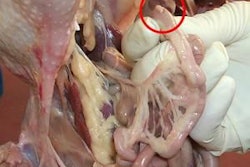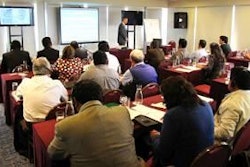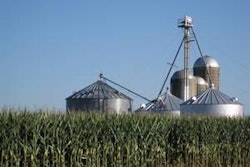
Le Gouessant, a Brittany feed manufacturer that has boosted its bottom line by slashing energy costs. The cost of energy for the company’s six feed plants, including one dedicated to fish feed, reached 3.5 million euros last year, a cost spiral that propelled the company into action.
“We decided on a long-term plan to reduce energy costs, going through technical expertise of the people in charge of the plants, staff management, maintenance and energy itself,” says Daniel Cornier, in charge of the saving strategy, which began 18 months ago.
What diagnostics showed
“The diagnostics showed that one of the first actions to focus on was on the way compressed air was utilized,” says Cornier. For example, one plant was using 350 Wh/Nm3 (hydrochloric acid vapor removal efficiency) in compressed air, while another one used only 140 Wh/Nm3.
Le Gouessant worked on measurement, management and equipment and changed its compressed air production and distribution system because it had so many leaks. And the company installed a synchronous engine on one of its hammer mills.
With the new engine, “It is really smaller and lighter, 450 kg to compare with 1.5 metric tons, with less energy to (move), quicker speed change, start and stop,” says Cornier. “We cut the working time with no charge because this engine starts quickly. We do the same for the fan on the horizontal cooling and save 20% of energy used there, because this new engine does not use any driving belt.”
Another new engine was installed at the mixer exit, which cut the energy cost from 3.8 kwh/t to 2.6 kwh/t.
How to cut costs
Overall, new motors are a major way for feed plants to cut energy use, the French feed research center Tecaliman has found. “This RTM (French research center dealing with energy optimization) focuses on the use of electric motors for processing or utilities for fans (ventilation), compressed air, pumping or cooling,” says François Lucas Tecaliman’s spokesperson for energy.
In feed and food processing, the main part of motors which develop more than 10 kW use a fixed speed. About 10 to 12% are equipped with a dimmer switch.
“Do you always need a huge motor and dimmer switch or just a smaller engine?” Lucas asks. “To begin any savings project, a company must establish a real diagnostic of its consumption and its equipment. For example, how long does the engine work with no charge? But the engine is not the only factor even if a company is quite sure that it’s going to be a more efficient engine and as a synchronous one it will be a great gain. You must go from the kind of energy you use to the way people are using it. You can’t just count an investment in higher performance machinery.”
Optimisation of equipment
“Equipment optimisation is the first key to savings,” says Lucas. For example, a synchronous engine sees output reduced as soon as it’s working only at 50% of its possibilities: A synchronous motor then adapts more easily and is really of great help for frequent starts. But a dimmer switch is of no use if the line is not equipped with well adapted regulation.

















